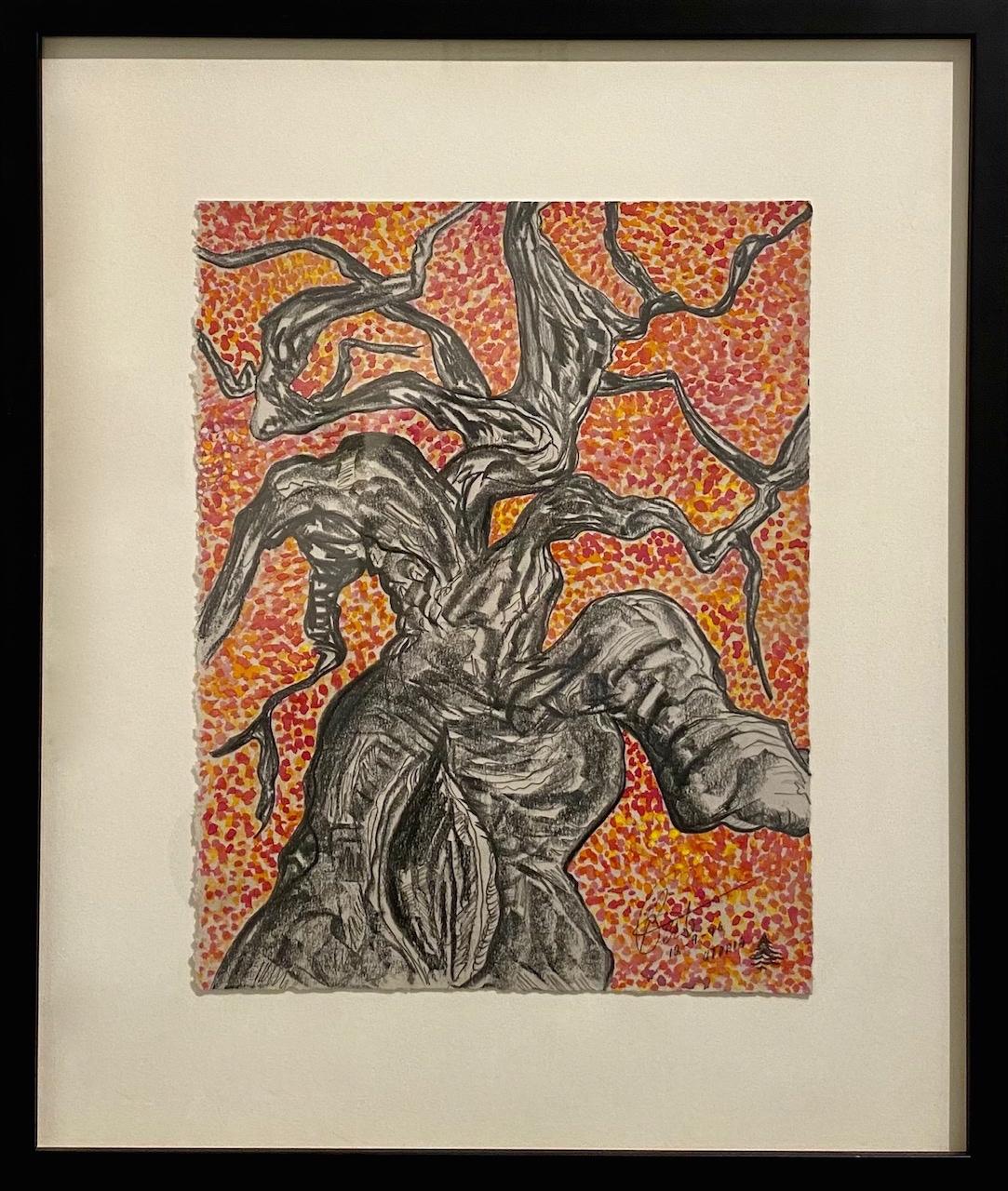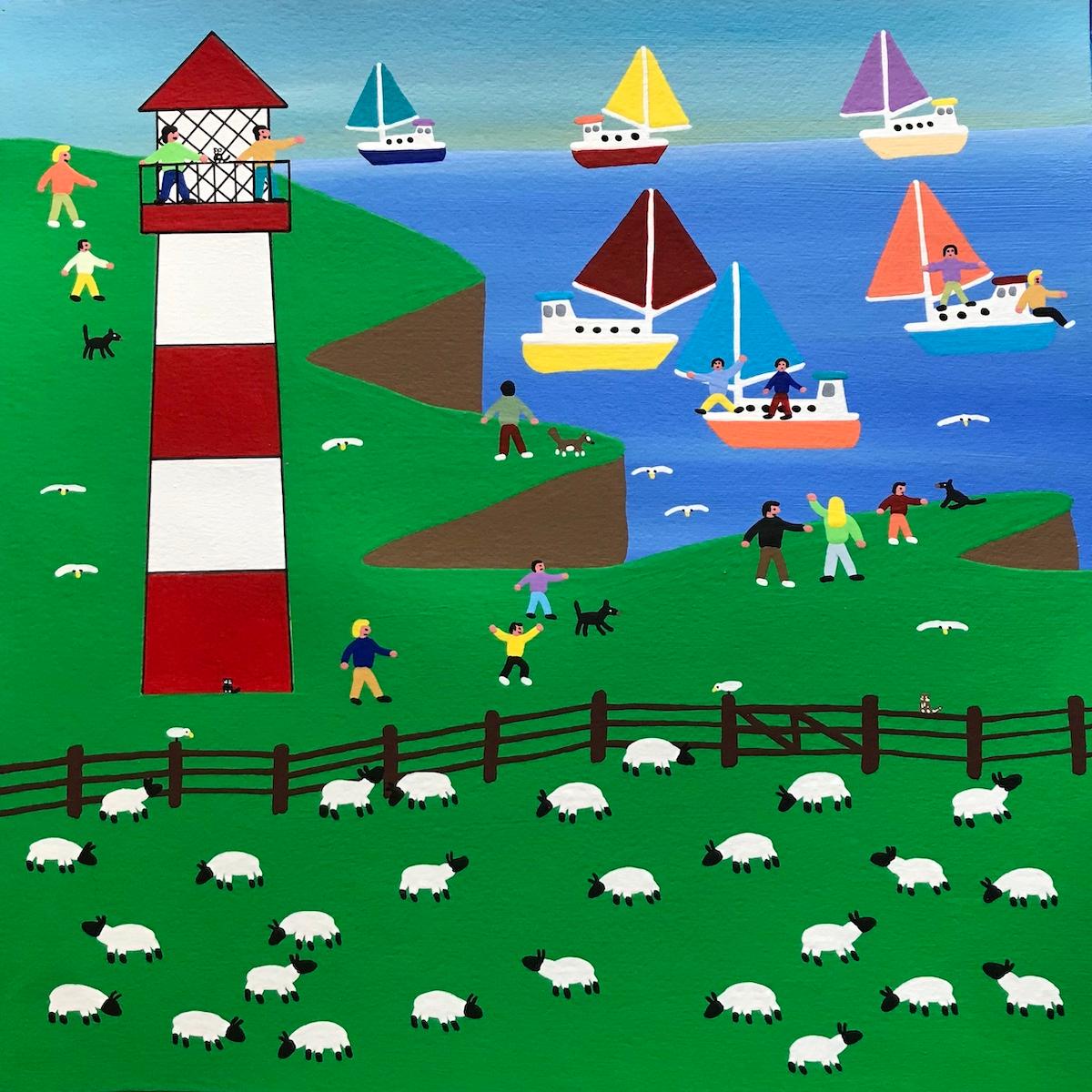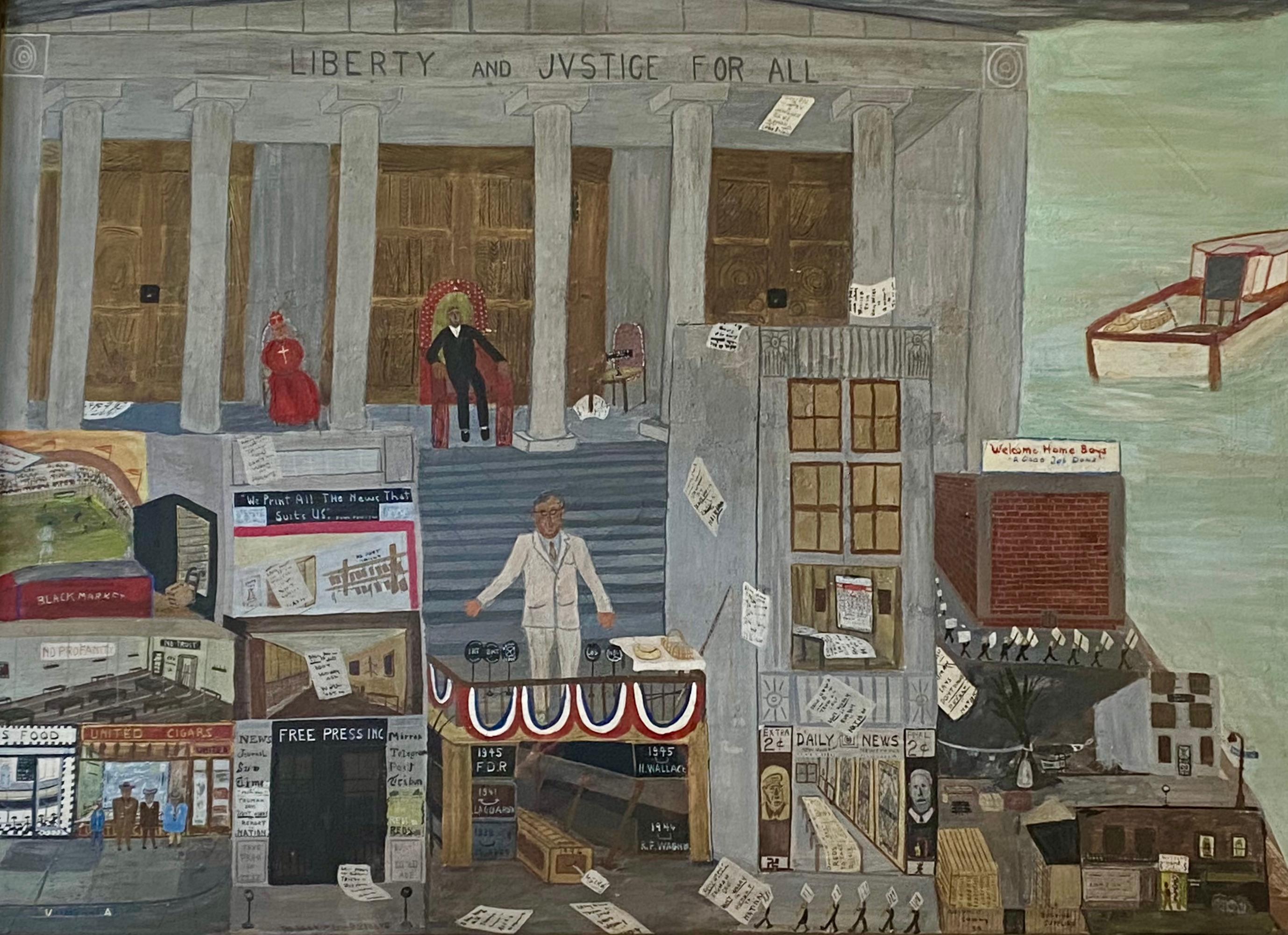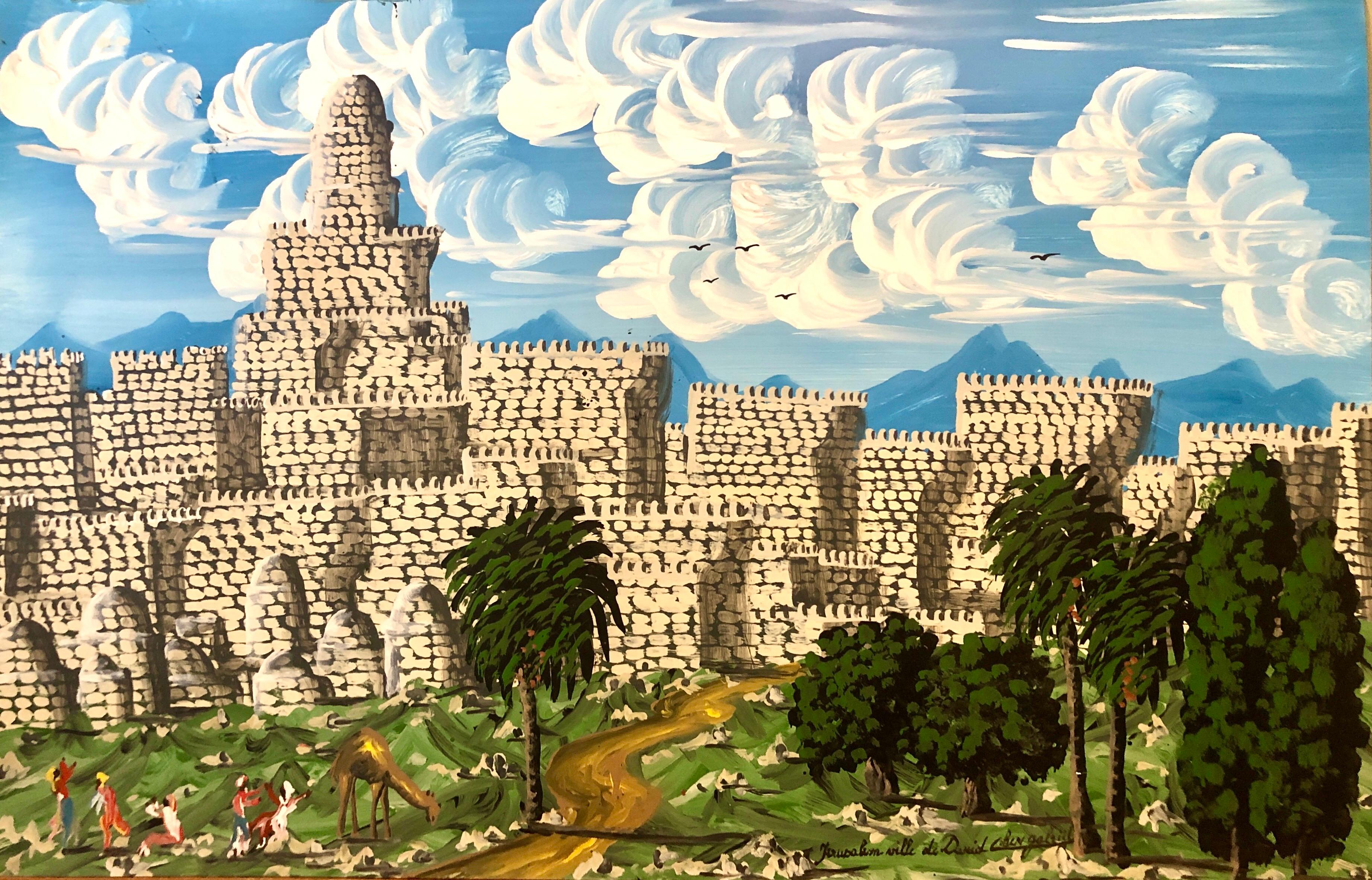Items Similar to Residence of Mr. and Mrs. Gerge Ottman / Charleston, N.Y.
Want more images or videos?
Request additional images or videos from the seller
1 of 6
Fritz VogtResidence of Mr. and Mrs. Gerge Ottman / Charleston, N.Y.1893
1893
About the Item
Signed lower right and dated lower left August 29, 1893
Little is known about Fritz Vogt until 1890 to 1900 when he earned a reputation for doing nearly 500 graphic architectural drawings near Sharon Springs and Ames in upstate New York. These were rural agricultural towns of German immigrants.
His renderings were precise and detailed and indicate he had studied architecture either in Germany or America. His work resembles drawing produced for the Beers Company of Philadelphia, publishers of atlases, but extensive attempts to research his life before 1890 have not been successful. It is known that when he did his upstate New York drawings he stayed with farm families and worked with paper, pencil, and ruler, and that he often worked outdoors. He played musical instruments and sometimes worked as a farm hand.
His drawings, many of them in color pencil, showed the types of crops planted, the animals, and details of the buildings. He also did several drawings of churches. Credit: askart
In today's market Fritz Vogt works are highly desirable and command strong prices in auction venues and private sales. His auction record is $145,000.00
- Creator:Fritz Vogt (1842 - 1900, American)
- Creation Year:1893
- Dimensions:Height: 17 in (43.18 cm)Width: 22 in (55.88 cm)Depth: 3 in (7.62 cm)
- Medium:
- Movement & Style:
- Period:
- Condition:
- Gallery Location:Saratoga Springs, NY
- Reference Number:1stDibs: LU170210356892
About the Seller
4.2
Vetted Seller
These experienced sellers undergo a comprehensive evaluation by our team of in-house experts.
Established in 1992
1stDibs seller since 2015
30 sales on 1stDibs
Typical response time: 19 hours
- ShippingRetrieving quote...Ships From: Saratoga Springs, NY
- Return PolicyA return for this item may be initiated within 3 days of delivery.
More From This SellerView All
- TransportBy Julian NemethyLocated in Saratoga Springs, NYSigned lower left. Contemporary artist Julian Nemethy is the son of artist Albert Nemethy, and his work can be distinguished from that of his father by the use of fantastical elements, extreme use of color and detail, and whimsical touches. Julian Nemethy is one of the many artists in the Nemethy family. Born in Hungary, his parents fled the Communist regime in the mid-1950s when Julian was a small child. He was one of six siblings who were raised by their father. In high school, Julian taught himself to paint, and felt he had found his vocation. In the 1980s, he moved to the Smokey Mountains of...Category
1980s Outsider Art Landscape Paintings
MaterialsCanvas, Oil
- ArmeniaBy Julian NemethyLocated in Saratoga Springs, NYSigned lower right. Contemporary artist Julian Nemethy is the son of artist Albert Nemethy, and his work can be distinguished from that of his father by the use of fantastical eleme...Category
Early 2000s Outsider Art Landscape Paintings
MaterialsCotton Canvas, Oil
- Fly Fising in a Mountain StreamLocated in Saratoga Springs, NYSigned lower right. Albert Nemethy Jr. is part of a well known artistic family from the Catskill region of New York State. The father Albert Nemethy Sr...Category
1990s Hudson River School Landscape Paintings
MaterialsPastel, Synthetic Paper
- Morrisinia, New York in the BronxBy William Rickarby MillerLocated in Saratoga Springs, NYSigned lower left, titled and dated Born in Staindrop, County Durham, England, he was a portrait and landscape painter, especially appreciated for watercolor painting, which he sold...Category
1850s Hudson River School Landscape Paintings
MaterialsPaper, Watercolor
- Blackberry picking near Church's Farm Hudson NYBy Arthur PartonLocated in Saratoga Springs, NYSigned lower left and dated 1863. Known as a Hudson River School painter, especially of mountain landscapes, Arthur Parton was well established in the New York art world where he exhibited at the National Academy of Design for more than half a century. He was born in Hudson, New York to a religious family supported by a cabinetmaker father. He enrolled in the Pennsylvania Academy of Fine Arts as a student of William Trost Richards, who remained a strong influence, and in 1862, his first exhibitions were in Philadelphia. In 1864, he moved to New York City where he exhibited regularly with the National Academy of Design excepting 1869 when he spent a year in Europe and was influenced by the Barbizon style of painting. In 1874, he and his wife moved into the Tenth Street Building in New York City, and he kept his studio there until 1893. In 1876, he gained much national notoriety at the Philadelphia Centennial Exposition for his paintings November, Loch Lomond and Solitude. He spent summers painting in the...Category
1860s Hudson River School Landscape Paintings
MaterialsBoard, Oil
- Sunrise on Lake George New YorkBy Samuel GriggsLocated in Saratoga Springs, NYSigned lower right Known as a painter of the White Mountains of New Hampshire, Samuel Griggs was listed as an architect in the Boston City directory from ...Category
Late 19th Century Hudson River School Landscape Paintings
MaterialsOil
You May Also Like
- "Andes Mountains Peru South America, " Joseph Yoakum, Black Folk Art LandscapeBy Joseph YoakumLocated in New York, NYJoseph Yoakum Andes Mountains Peru So America, circa 1960s Colored pencil and ballpoint pen on paper 7 1/4 x 10 1/2 inches Provenance: Karen Lennox Gallery, Chicago Private Collection, South Dakota Yoakum began drawing in the early 1960s. Most of his work consists of radiantly colored landscapes with mountains, water, trees, and winding roads in abstract and complex configurations. his period of greatest activity — 1965 to 1970 — when he usually made one drawing a day. Yoakum maintained he had seen all the places represented in his drawings, a statement that may not be true in some instances. He traveled a great deal, beginning in his early teens when he ran away from home and became a circus handyman. Yoakum’s drawings can be considered memory images growing out of either actual or imagined experiences. All of his drawings have titles that grew longer and more specific over the years. He dated his works with a rubber stamp — an oddly impersonal, labor-saving device. Although Joseph Yoakum gave vastly different accounts of his background, he was, throughout his life, classified as an African American. Sometimes Yoakum claimed that he was a full-blooded “Nava-joe” Indian, one of twelve or thirteen children born to a farmer on an Indian reservation in Window Rock, Arizona. At other times he insisted that he was of African-American descent. He described his mother as a strong woman who was a doctor and knowledgeable in the use of herbal medicines. Yoakum’s family moved to Kansas City, Missouri, during his early childhood. His father was employed briefly in the railroad yards prior to settling permanently on a farm in nearby Walnut Grove...Category
1960s Folk Art Landscape Paintings
MaterialsPaper, Watercolor, Ballpoint Pen, Color Pencil
- "Dying to Live, " Mixed Media Acrylic and Charcoal drawing on PaperLocated in Houston, TXIn this Bert Long work, a stimulating and vibrant background is contrasted by an expressive charcoal rendering of a twisting tree. The tree’s lack of leaves ...Category
1990s Folk Art Landscape Paintings
MaterialsAcrylic, Charcoal, Paper
- "Sleepless Night, " Mixed Media City Landscape Painting on PaperLocated in Houston, TXThis intimate, yet highly energetic, artwork is a timeless example of Long’s exceptional style. Bert L. Long Jr., was self-taught artist, was born in 1940 in Texas, grew up the Houston’s historic Fifth Ward and received his formal education from UCLA. Following a career as a successful master chef, Bert Long...Category
1990s Folk Art Landscape Paintings
MaterialsPaper, Acrylic
- Cliff Top Walk, Gordon Barker, Lighthouse painting, Coastal art, Folk art, 2022Located in Deddington, GBCliff top walk by Gordon Barker [2019] original and hand signed by the artist Acrylic on paper Image size: H:29 cm x W:29 cm Complete Size of Unframed W...Category
21st Century and Contemporary Folk Art Landscape Paintings
MaterialsPaper, Acrylic
- Outsider Folk Art American Mid-Century Naive WW2 Self Taught WPA Depression EraBy Ralph FasanellaLocated in New York, NYOutsider Folk Art American Mid-Century Naive WW2 Self Taught WPA Depression Era "Victory for Now" Ralph Fasanella (1914-_1997) "Victory and After,” gouache on paper. Signed, titled...Category
1940s Outsider Art Landscape Paintings
MaterialsPaper, Gouache
- Large Israeli Naive Art Screen Enamel Oil Painting Jerusalem Old City Folk ArtBy Gabriel CohenLocated in Surfside, FLJERUSALEM, Vielle du David, (City of David) Superlac (enamel) painting on paper, hand signed, titled and dated. Provenance: Michael Hittleman Gallery Los Angeles. Gabriel Cohen, (French-Israeli) Self taught, Naive painter was born in Paris in 1933, to parents from Jerusalem with a father who studied the kabbalah. Throughout World War II, the family hid from the Nazis in Paris. Images of Nazi soldiers appear in several of his paintings. In 1949, when Gabriel was 16, the family returned to Israel. They managed to save enough money to move back to the quarter where both parents were born: Ohel Moshe in Nachlaot. Gabriel served in the artillery corps and after the army, went back to live in his parents' house and earned a living polishing diamonds. The head of the polishing plant, who noticed his employee's artistic skill, allowed him to paint during work hours. He once asked Cohen if he could draw a tiger. Cohen drew him a tiger. And he did a lot of sculpting and painting on glass. He also loved to play the guitar, especially flamenco style. Critics say he is one of Israel's greatest naive-style painters. Along with Shalom of Safed, Kopel Gurwin and Natan Heber, He is renowned as one of Israel's greatest living naive-style folk art painters, recipient of the Jerusalem Prize for Art (1987), a permanent entry in encyclopedias of naive painting, who exhibited his work not only in Israel, but also in Paris, Venezuela, Denmark and Germany; the same Gabriel Cohen whose colorful , bold Naif paintings were exhibited at the Jewish Museum in New York in 1987 alongside works by Marc Chagall; the same Gabriel Cohen about whom curator and art scholar Gideon Ofrat says, "There is no questioning his greatness." He has shown in Paris on the Rue de Rosiers in the Marais. His impressions of his journeys, mostly imaginary, yet some real, are expressed in Cohen's paintings. Huge, colorful canvases rich in precise detail and fantasy, in which he paints the Eiffel Tower and the Russian steppes or the vistas of Paris and the Tower of Babel "In my opinion, it's also because the Tower of Babel has some kind of phallic, erotic meaning, but also because of the internationalism, of the mixture and confusion of nations, which is an essential element in Gabi Cohen's work," says Gideon Ofrat. There is no superlative that has not been lavished on Cohen's work by art critics, since he began showing his paintings at age 40, All the art critics seemed to agree at once that Cohen is one of the greatest naive-style painters in Israel. Their counterparts abroad seconded this view. About a year and a half ago, Zadka organized a show for Cohen at the Jerusalem Artists' House. The Tel Aviv Museum bought a painting of Gabi's and so did the Israel Museum, and several artists bought his drawings. He is a great, great painter. There is no painter who is more of a symbolist and illustrative artist than he is. As a painter myself, I admire him." The Yom Kippur War in 1973 sparked an artistic breakthrough for Cohen; it was at that time that he began to sit on the sidewalk after his work as a diamond polisher and paint. Not long afterward, in early 1974, he did a painting he called "Moses on the Mountain." Ruth Debel, of the Debel Gallery in Ein Kerem, passed by and saw it on the street. She asked how much he wanted for it, and for the first time in his life, he realized that his work had financial value. His first show was at the Debel Gallery in 1974. The response was overwhelming. Cohen was immediately declared a genius. His paintings at the gallery were purchased and he continued to create new paintings. That same year, he was invited to take part in a group exhibition of naive artists at the Kunsthaus in Zurich, and a year later, his work was included in a traveling show of naive-style artists from Israel that was exhibited in Denmark and Germany. Soon after that he was invited to be part of group shows in Venezuela and at the Tel Aviv Museum. Cohen had four solo shows at the Debel Gallery. Awards And Prizes 1987 Jerusalem Prize for Painting and Sculpture 1999 Shoshana Ish-Shalom Prize for special contribution to art, Jerusalem He has exhibited alongside all of the Israeli great artists. included in the Naive Art Group exhibition Gvanim Art Gallery, Jerusalem Rubin, Rachel Roman, Yitzhak Zarembo, Leah Moscovitz, Shalom (of Safed) Steinberg, Michael Denisov, Salva Harbon, Haim Cohen, Gabriel Chanannia, Joseph (Jojo) Local Hero...Category
20th Century Folk Art Landscape Paintings
MaterialsPaper, Oil, Alkyd
Recently Viewed
View AllMore Ways To Browse
Graphic Architecture
Mr Brown
Mr Antique
Agriculture Art
Upstate New York
Antique Art Auctions
Antique Art Auction
Art Antique Auction
Mr Mrs
Mr And Mrs
Charleston Art
Mr Architecture
Charleston Painting
New York Used Instruments
Folk Art Church
Painting Musical Instruments
Antique Ruler
Paintings With Musical Instruments




